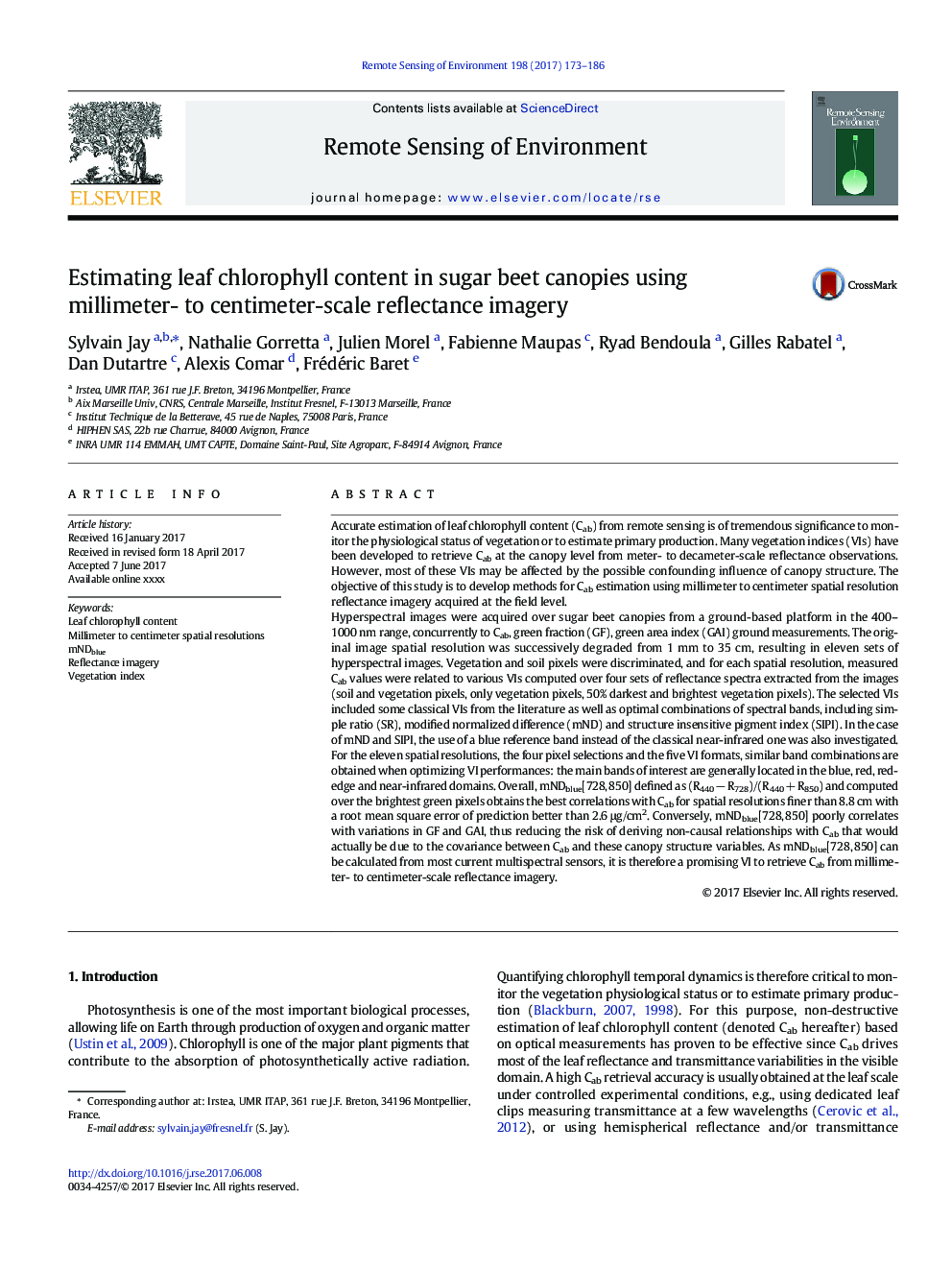| Article ID | Journal | Published Year | Pages | File Type |
|---|---|---|---|---|
| 5754927 | Remote Sensing of Environment | 2017 | 14 Pages |
Abstract
For the eleven spatial resolutions, the four pixel selections and the five VI formats, similar band combinations are obtained when optimizing VI performances: the main bands of interest are generally located in the blue, red, red-edge and near-infrared domains. Overall, mNDblue[728, 850] defined as (R440 â R728)/(R440 + R850) and computed over the brightest green pixels obtains the best correlations with Cab for spatial resolutions finer than 8.8 cm with a root mean square error of prediction better than 2.6 μg/cm2. Conversely, mNDblue[728, 850] poorly correlates with variations in GF and GAI, thus reducing the risk of deriving non-causal relationships with Cab that would actually be due to the covariance between Cab and these canopy structure variables. As mNDblue[728, 850] can be calculated from most current multispectral sensors, it is therefore a promising VI to retrieve Cab from millimeter- to centimeter-scale reflectance imagery.
Related Topics
Physical Sciences and Engineering
Earth and Planetary Sciences
Computers in Earth Sciences
Authors
Sylvain Jay, Nathalie Gorretta, Julien Morel, Fabienne Maupas, Ryad Bendoula, Gilles Rabatel, Dan Dutartre, Alexis Comar, Frédéric Baret,
